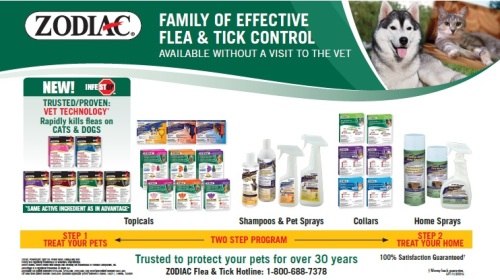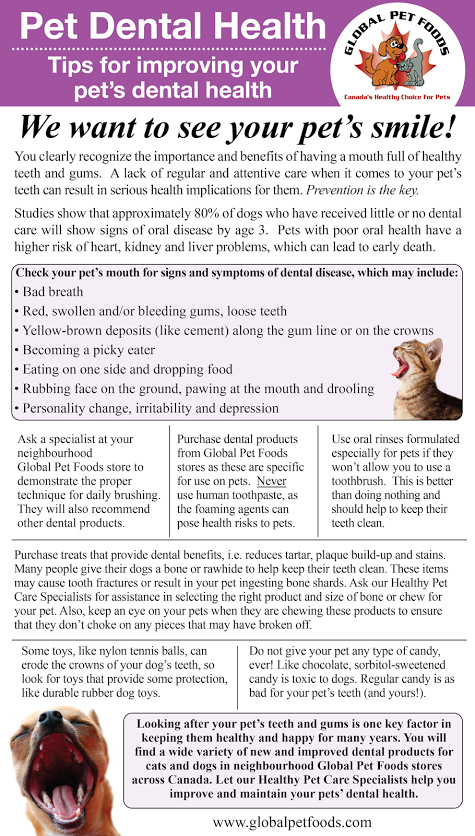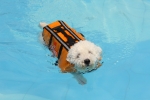
Spring is a time for renewal. The snow and ice melt away and the birds return to our backyards along with warmer weather, longer daylight hours, budding trees and eventually, beautiful gardens. Spring also brings us sweet puppies and kittens. There’s a spring in the step in everyone around us!
The Spring season also brings about new routines and chores, and as well as a list of “things to do” to ensure that we’re ready for the season. Having a pet (or pets!) means that there are some additional items on the list to make certain that they’ll remain happy and healthy during the season. Below are some of our key recommendations:
Winter weight gain: Getting flabby over the winter can be just as problematic for our pets as it is for us. Many of us tend to avoid heading outdoors in the winter due to the cold and snow and we tend to eat more and exercise less. This means many of us and our pets may have experienced some weight gain. An increase of as little as two pounds for a cat or a small dog may not seem significant, but imagine if you increased your weight by 20% over the winter! This can lead to severe health problems. About one-half of all pets are overweight or obese, which may be directly linked to several illnesses, including behavioral problems, achy joints and arthritis, heart disease and some types of cancer.
Daylight Savings Time provided us with an extra hour of light in the evening, which is  ideal for an after-dinner walk. Use the warmer weather as a great reason to head outside and discover some new routes on a daily walk with your dog. Don’t just make your dog sniff the same old spots, rather take a new route and work up a sweat by alternating your normal pace with a quicker one. From retrieving sticks to the simple toss of your dog’s favourite ball, running, catching, throwing and fetching provides a heart-pumping workout for you both….your heart will thank you! Make sure that you bring a thermos with some fresh water to keep you both hydrated during your walk. Even cats will enjoy being out in the garden, but please ensure that you stay with them lest they run off. Many Global Pet Foods stores have weight scales; we encourage you to take your pets in to be weighed regularly.
ideal for an after-dinner walk. Use the warmer weather as a great reason to head outside and discover some new routes on a daily walk with your dog. Don’t just make your dog sniff the same old spots, rather take a new route and work up a sweat by alternating your normal pace with a quicker one. From retrieving sticks to the simple toss of your dog’s favourite ball, running, catching, throwing and fetching provides a heart-pumping workout for you both….your heart will thank you! Make sure that you bring a thermos with some fresh water to keep you both hydrated during your walk. Even cats will enjoy being out in the garden, but please ensure that you stay with them lest they run off. Many Global Pet Foods stores have weight scales; we encourage you to take your pets in to be weighed regularly.
Spring grooming: Now that spring has sprung, it’s important to pay attention to your pet’s coat. It’s now time to groom your pet to remove the remains of her winter coat. For those with longhaired pets, you’re probably seeing tufts of pet hair all over the floor in your home. This is a key sign that you need to groom your pet on a daily basis. Your pets will enjoy spending some quiet time with you each day while you groom them. The Healthy Pet Care specialists at your Global Pet Foods can help you select the right grooming tools for your pet’s breed. Slicker brushes and brushes with dual level pins on a cushioned pad with a curved head are ideal (the long and short pins work together to remove the mats and dead hair).
Spring Cleaning: When you are giving your home a spring cleaning, remember to clean your pet’s products too. Worn out or torn products should be discarded and replaced with new ones to prevent your pets from biting and choking on torn pieces.
Ticks, fleas and heartworm – is your pet protected? April showers bring May flowers as well as bugs! Make sure that your pet is on year-round heartworm preventative medication, as well as a Flea & Tick program. When your dog or cat has fleas, your home is soon to follow. Far from a minor irritation, fleas can wreak havoc on your pet’s life and pose a serious threat to his health. Fleas work around the clock to seek a host, and then they feast on enough of the host’s blood to equal up to 15 times their own body weight every day. Because of the challenges caused by fleas, prevention is always your best protection.
Once fleas establish residence in your home, they have no trouble firmly entrenching themselves. With suitable environmental conditions — warm temperatures, enough humidity, and at least one nourishing host — they can complete their life cycle in as little as 18 days. Flea larvae may develop anywhere your pet wanders: in your carpeting, rugs, furniture, and even in cracks in the floor, making it a challenge to treat the premises thoroughly enough. Moreover, flea pupae can be difficult to kill inside their cocoons so even with proper treatment, it can take weeks to successfully eliminate an infestation.
Prevention is the key! Anyone who has ever dealt with these troublemakers never wants to contend with them again. If you’d rather not fight the flea battle, get proactive and help prevent them from ever setting up residence on your pet in the first place. Simply give your dog or cat a monthly topical flea preventive, such as Zodiac® Spot On® Flea & Tick Control, to protect him from a flea infestation.

Fleas are responsible for a variety of problems ranging from simple itching and infestation to allergic skin reactions (Flea Allergy Dermatitis – FAD), the spread of tapeworms and some bacterial infections. Fleas have claimed more human lives than all wars ever fought. Contrary to popular belief, the female flea always lays her eggs on the pet. The adult flea is a blood sucking parasite that feeds only on the host’s blood, ingesting it through its piercing mouthpart. Adult fleas represent only a small percentage of the infestation. The vast majority of the flea population is actually not on your pet but appears in your environment in either the egg, larva or pupa stage (which you cannot see). Therefore, if you have an infestation you will need to treat not only your pets but also the environment your pet is in (home/car, etc.).
The flea life cycle consists of four very distinct developmental stages:
Adult Flea – biting, reproducing, and most annoying
Flea Egg – fall from your pet into your home and yard
Flea Larvae – worm-like, settles deep in carpet fibers, furniture, pet bedding
Flea Pupae – shielded by a cocoon, no treatment can control flea pupae
In as little as 15 days, the flea life cycle is completed. In 30 days, 10 fleas can multiply to thousands. If one pet in the household has fleas, assume that all of your pets have fleas. To get rid of fleas, you have to kill both the adult and their offspring.
Ticks: Are bloodsucking ectoparasites which may transmit various infectious diseases to animals and man (Lyme disease). There are two species; Soft Ticks (Argosidae) and Hard Ticks (Ixodidae), which are the most common. Ticks’ only meal is blood and they can take in up to 600 mg of blood but can survive two years without feeding (adult).
There are four stages in the development of ticks: Eggs, Larva (seed tick), Nymph (yearling tick) and an Adult. Most hard ticks take three hosts to complete all four stages. After feeding and mating on the host, the engorged female drops to the ground, deposits up to 3,000 eggs in a protected place and dies.
NOTE: The key to a successful elimination of fleas and ticks is to target all of those areas where the problem is to be found:
STEP 1 – Treat Your Pet: control adult fleas/ticks on your pet
STEP 2 – Treat Your Home: eliminate both pre-adult stages and the newly emerging adult
Need some help keeping your pets happy and healthy this spring? Visit your neighbourhood Global Pet Foods store and speak to our Healthy Pet Care Specialists for product re recommendations and for receive answers to your questions about caring for your pets. You can also purchase Zodiac Flea & Tick products while you’re there. We wish you a wonderful Spring!!



















You must be logged in to post a comment.